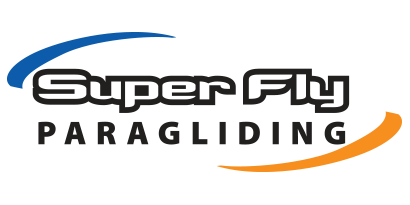Paragliding vs Parasailing: A Comprehensive Comparison
Posted on May 02 2024
The sky calls to us with the promise of adventure, freedom, and the unparalleled thrill of flight. Two popular ways to answer that call are paragliding and parasailing. While both activities provide an adrenaline rush and stunning aerial views, they differ in experience, mechanics, and skill requirements.
In this comprehensive comparison, Super Fly Paragliding in Utah delves into the intricacies of paragliding and parasailing to help you decide which aerial adventure is right for you. By the end of this post, you'll clearly understand the primary differences, the unique benefits of each activity, and what you can expect when you take to the skies.
What is Paragliding?
Free-Flying Adventure
Paragliding involves flying a lightweight, foot-launched glider aircraft. Unlike parachuting, which is typically used for descending from high altitudes, paragliding focuses on maintaining and controlling flight. A basic paraglider is an unpowered wing made of fabric suspended by a series of lines.
Powered Paraglider
A powered paraglider (PPG) is an enticing option for those who crave more control and longer flights. Powered paragliding adds a motor and propeller, allowing pilots to take off from flat terrain without needing wind or elevation. This makes it possible to enjoy the paragliding experience even in areas with limited natural launch sites.
The Experience
Paragliding offers an extensive level of control, allowing pilots to navigate thermals and air currents to gain altitude and extend flight time. The sensation is often described as serene, with flights lasting from several minutes to hours, depending on conditions and pilot skill.
What is Parasailing?
Towed Flight
On the other hand, parasailing involves being towed behind a boat while attached to a parachute-like canopy. As the boat speeds up, the parasail is lifted into the air, experiencing a combination of speed and elevation controlled by the boat's movement.
The Experience
Parasailing is often viewed as a more relaxed and accessible aerial activity than paragliding. The flight duration is generally shorter, usually around 10-15 minutes, and the altitude is typically lower. However, the views are no less spectacular, and the experience of being gently lifted above the water or land can be exhilarating.
Key Differences Between Paragliding and Parasailing
Control and Skill Level
- Paragliding: Requires more skill and training. Pilots must learn to control the wing, navigate air currents, safely take off and land. Training usually involves ground handling, tandem flights, and solo practice under the supervision of an instructor.
- Parasailing: Requires minimal skill. The operator of the boat controls the flight, making it a more accessible option for beginners and those looking for a less hands-on experience.
Equipment
- Paraglider: Involves a paraglider wing, harness, variometer, and sometimes a reserve parachute. Powered paragliders have a motor, propeller, and fuel tank.
- Parasail: Involves a parasail wing, harness, and towline connected to the boat. The parasailing operator generally provides the equipment.
Launch and Landing
- Paraglider: Launches typically occur from elevated terrain like hills or mountains. Powered paragliders can take off from flat ground. Landings require an open space and good technique.
- Parasail: The boat operator manages the launch and landing. The parasail takes off and lands on the boat or, in some cases, a designated area on the beach.
Duration and Altitude
- Paragliding: Flights can last from a few minutes to several hours and reach altitudes of several thousand feet.
- Parasailing: Flights generally last around 10-15 minutes and reach altitudes of 200-800 feet, depending on the length of the towline and the boat's speed.
Safety Considerations
Paragliding
Paragliding is generally safe when practiced with proper training and equipment. However, it does come with inherent risks due to the reliance on natural elements like wind and thermals. It is essential to undergo thorough training from a certified instructor and always perform pre-flight checks.
Parasailing
Parasailing is considered a relatively safe activity, especially when conducted by reputable operators who follow safety regulations. Risks include equipment failure and adverse weather conditions, which are minimized with proper maintenance and monitoring.
Benefits of Paragliding
- Extended Flight Time: The ability to soar for hours and navigate thermals.
- Control: Powered paragliders offer greater control over flight path and altitude.
- Terrain Versatility: Powered paragliders can take off from flat ground, expanding the number of available launch sites.
- Thrill and Challenge: A more hands-on and challenging experience for those who love adventure sports.
Benefits of Parasailing
- Accessibility: Suitable for beginners and requires minimal skill.
- Convenience: No need for extensive training or personal equipment.
- Relaxation: A more relaxed and leisurely flight experience.
- Scenic Views: Offers stunning views with minimal effort.
Which Should You Choose?
For the Adventurous Spirit
Paragliding is the way to go if you thrive on challenges, enjoy learning new skills, and seek the thrill of extended flight. The sense of accomplishment and freedom that comes with mastering a paraglider or powered paraglider is unmatched.
For the Leisure Seeker
Parasailing is the perfect choice if you prefer a more relaxed and effortless way to enjoy aerial views. It offers a delightful taste of flight without the need for extensive training or preparation.
Both paragliding and parasailing offer unique and exhilarating ways to experience the thrill of flight. Whether you choose the hands-on adventure of a powered paraglider or the laid-back enjoyment of a parasail, you're guaranteed breathtaking views and unforgettable memories.
Start your paragliding journey with the experts at Super Fly! If you’re looking for a P2 Pilot rating or want to try an introductory paraglider lesson, our experienced instructors will ensure you have a safe and exhilarating experience. Learn to paraglide in Utah at the world-famous Point of the Mountain and enjoy personalized instruction tailored to your pace.
Ready to soar? Contact us today to schedule your lessons and take the first step towards becoming a confident paraglider pilot.

0 comments